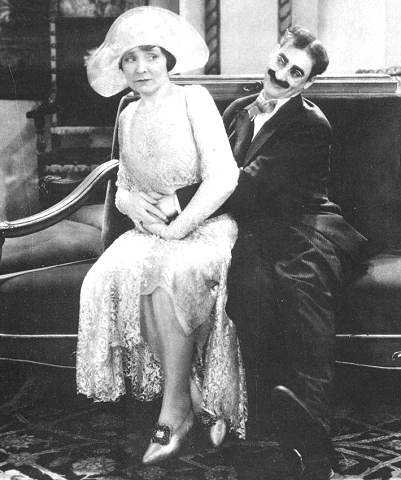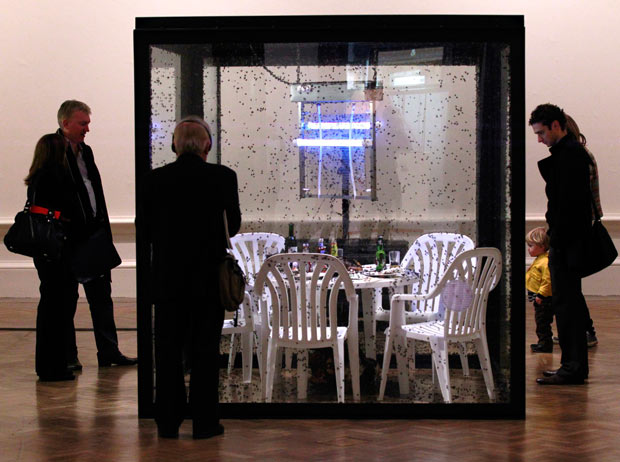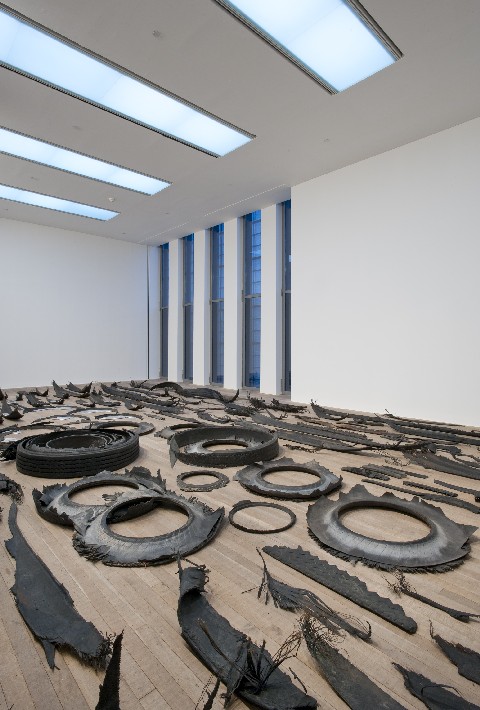
19th century sculpture in the Musee d'Orsay: sexy but boring
“Why is sculpture so boring?” So said Charles Baudelaire in 1848. Sculpture in Baudelaire’s time was boring. In actual fact, with some notable exceptions, sculpture was, for a very long time, very boring indeed. Have a wander through the Musee d’Orsay or the second floor of the Met and you might well be struck by the disparity between painting and sculpture in the mid- to late- nineteenth century. On the one hand, there’s Gustave Courbet’s ferocious, gnarled tableaux of ugly peasants and aggressively sexual maidens; on the other, Jean-Baptiste Carpeaux’s dreary trudge through mythological subjects. With the occasional blip – all of Degas’s sculptures and some of Rodin’s – sculpture at the birth of modernism looked like something we were planning to ditch once we worked out what paintings should look like. This wasn’t new in the nineteenth century – Leonardo da Vinci had famously already slammed sculpture as retrograde and coarse, something for the horny-handed working classes/Michelangelo – and nothing had really changed by the time of Ad Reinhardt’s dinner party witticism in the 1950s: “sculpture is something you bump into when you back up to look at a painting,” after which he waggled his eyebrows and pinched an heiress on the backside.

Ad Reinhardt in action
The thing is that sculpture is only boring, in Baudelaire’s terms, as sculpture. What set aside someone like Courbet from someone like Carpeaux was that what he was painting was completely unprecedented: it might as well not have been “painting.” This is the beginning of a long line of people decrying things as “not being art”; well, maybe they aren’t. Maybe Duchamp’s readymades aren’t art. That’s fine, because it’s a semantic discussion: Duchamp’s Bottle Rack isn’t art as long as you’re quite sure what art is. (The same argument goes for Adam Sandler: I think he’s funny because he complies with my definition of what “funny” is — farts and falling over, thanks for asking — but everyone I have ever met thinks the exact opposite, which is fine. It’s a semantic discussion, I tell them, weakly, as they leave). The problem gets stickier when we take apart the statement “sculpture is boring”: sculpture in Baudelaire’s time was (mostly) boring, simply because it was certain it was sculpture, and within that narrow definition, it seemed washed-up. Reinhardt’s quip was made on the cusp of sculpture changing irreversibly in the shape of minimalism, which ditched the metaphor of traditional sculpture for good. Now every piece of contemporary sculpture has to be seen through that legacy, best summed-up in Frank Stella’s less waspish “what you see is what you see.” And because of that statement and the vast impact the art it represents has had on makers of objects, the term ‘sculpture’ feels less and less appropriate, like a childhood nickname you still cling to, even though you’re a 56-year-old divorcee living in a hotel just outside Birmingham (hi, Timmy!).
Two exhibitions in London make different proposals about what sculpture today might be, and both leave the visitor with more questions than answers, which is probably the way it should be. (We’re always told that art should “raise questions,” but it’s worth, every so often, remembering that over 99% of all art ever made doesn’t). One, a monographic show – Gabriel Orozco’s retrospective at Tate Modern – provides a kind of response to the other, the sculptural survey show Modern British Sculpture at the Royal Academy.
Modern British Sculpture has deservedly received a very mixed bag of reviews, partly because large swathes of it aren’t modern (there’s a whole room of ancient art, loaned from the British Museum) and aren’t British (the show features Carl Andre, Jeff Koons, Urs Fischer, the weirdly ubiquitous Rachel Harrison, and a bizarre reconstruction of the shed in which Kurt Schwitters made his final version of the Merzbau). But what’s salvageable from the show is the discussion over what is or isn’t sculpture. Modern British Sculpture does what any survey show of a single twentieth-century artistic practice does: it tracks a loss of faith. No curatorial flouncery can disguise a general rise of aesthetic and technical atheism in the later twentieth century. Juxtapositions of old and new ought to generate leaps of imagination across time. Here (as in Tate Modern’s original displays), it merely creates a kind of sadness. In contrast with, say, a Victorian cast bronze of a heroic nude – for all its imperial pomp, which we’re told (in the wall texts, seriously!) to be faintly embarrassed by – a work of contemporary bricolage, with, say, a neon rod jammed into a sack, looks smug, self-satisfied, ascetic, and disdainful of its audience. Old art ought to provide a challenge to the present, and the best of it does. Not to adopt “skilfulness” (another wildly shifting term, which its users seem to think is a universal quality), but to justify its reasons for being, beyond a tiny circle of cognoscenti.

Damien Hirst's "Let's Eat Outside Today" at the Royal Academy. Photo: AP
What makes the juxtaposition of early and later modern sculpture disingenuous is that, at a certain point, it isn’t sculpture, at least not in the sense that the earlier works use it. Gabriel Orozco’s work, now on display at Tate Modern, also isn’t sculpture, but it isn’t an absolute eschewal of traditional sculptural principles either. Steeped in post-minimalist/Duchampian orthodoxy, Orozco uses this as a step up towards more interesting territory. In other words, he takes the audience’s intelligence seriously. Take, for example, his work Lintels (2001), a series of small sheets of lint culled from dryers in New York laundromats and hung on taut wires across the ceiling, just over head height. Typically, the work revolves on a slightly painful pun, making allusion to the work’s architectural presence. As you walk beneath them, they sway in response, like a body breathing, and you’re reminded (as in much of the artist’s work) of the human body and its absence. These fragile sheets, composed of the bits of fluff and dead skin left behind in public places, become collective portraits, physical obituaries. In a neat bit of curatorial symmetry (a fascination Orozco expands upon in a number of other works), the adjoining room shows the artist’s very funny Obit (2008), headlines snipped from the New York Times obituaries, floating on hanging white sheets, the comic equivalent of Lintels’ funereal delicacy. Flipping continuously between weight and lightness, the slight and the monumental, Orozco’s objects, in their paired relationships with other works in his oeuvre, generate a discursive vernacular conversation about what sculpture might be to us, what it might give us.

Gabriel Orozco's "Chicotes" (2011) at Tate Modern. Courtesy the artist and kurimanzutto, Mexico City
In a new work, Chicotes, made for this exhibition, Orozco deepens and broadens the conversation. A field of rubber strips, the shredded and burnt-out remnants of car tires culled by the artist from Mexican roadsides, is arranged on the gallery floor. Coiled like snakes or writhing like worms, the strips take on a comic inner life of their own. (I suspect the similarities to the Tate’s great Beuys installation, Lightning with Stag in Its Glare, another found-object Genesis narrative, is intended). You’re reminded, continuously, of the world beyond, not merely in the work’s worn provenance, but in its rich rubbery smell, redolent of escape, of exile. (Again, the work’s occasional reminders of the forms of Land Art – especially the coils of Smithson’s Spiral Jetty and its allusions to the epic road trip required to see them — seem deliberate). Some of the rubber strips have globs of aluminum melted into them by the artist, forming small reliefs of the insides of the tires that recall the shells of turtles or reptilian skin. Something is being made out of apparently nothing. Sculpture appears, unexpectedly, as though it had never been away.




Pingback: Tweets that mention Letter from London: Being Boring | Art21 Blog -- Topsy.com